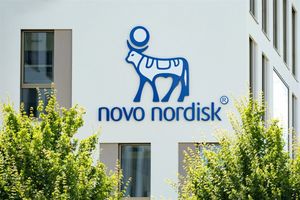Digital Doctors and Purified Air: Technology's Dual Thrust in Healthcare Transformation

The healthcare landscape is undergoing a profound transformation, driven by an accelerating wave of technological innovation. Far beyond the traditional clinic walls, digital solutions are reshaping how patients interact with providers and how environments are safeguarded against unseen threats. Two pivotal advancements, messaging-oriented care and advanced air purification systems, stand out as immediate game-changers. These technologies promise to unburden overstretched healthcare systems, enhance accessibility, and fundamentally redefine public health and safety in a post-pandemic world, creating significant implications for public companies and investors alike.
The Digital Evolution: Messaging-Oriented Care and the Battle for Clean Air
The evolution of healthcare communication has reached a new frontier with the advent of messaging-oriented care. This innovative approach leverages asynchronous digital communication, primarily secure text messaging, to facilitate flexible and efficient interactions between patients, providers, and care teams. Unlike traditional telemedicine, which often mimics in-person visits via real-time video or phone calls, messaging-oriented care allows for convenient, non-urgent exchanges of health information, appointment details, medication reminders, and even clinical advice at both parties' convenience. This shift is crucial in unburdening telemedicine platforms, which have seen unprecedented demand since the COVID-19 pandemic. By handling routine inquiries and follow-ups asynchronously, healthcare providers can allocate their synchronous appointment slots to more complex cases, significantly improving workflow efficiency and reducing the administrative load. The timeline leading to this moment has seen a gradual embrace of digital patient portals and secure email, culminating in dedicated, HIPAA-compliant messaging platforms designed for the unique demands of healthcare. Key players in this space range from specialized communication platforms to integrated digital health giants, all vying to streamline patient engagement and provider communication.
Concurrently, the urgent need to combat airborne threats, most notably highlighted by the COVID-19 pandemic, has propelled advanced air purifiers into the spotlight. These sophisticated systems are no longer a luxury but an essential component of public health infrastructure, employing a diverse array of technologies to neutralize harmful particles, viruses, and bacteria from indoor air. High-Efficiency Particulate Air (HEPA) filters, capable of capturing 99.97% of particles as small as 0.3 microns, form the bedrock, effectively trapping virus-laden droplets. Ultraviolet-C (UV-C) sterilization further augments this by damaging the DNA of microorganisms, while activated carbon filters tackle gases and volatile organic compounds (VOCs). Emerging technologies like NASA-based ActivePure Technology, which actively releases virus-neutralizing particles into a room, represent the cutting edge. The market for these devices has exploded, driven by heightened health awareness, rising global air pollution, and stricter indoor air quality regulations. Initial market reactions have been overwhelmingly positive, with significant investment and adoption across residential, commercial, and healthcare sectors.
Companies Poised for Growth and Disruption
The technological shifts in healthcare present a clear delineation of potential winners and losers in the financial markets. Companies at the forefront of messaging-oriented care stand to gain substantially. Teladoc Health (NYSE: TDOC), a leading telemedicine provider, already integrates online messaging as part of its consultation options, and deeper integration of asynchronous care will enhance its service offerings and patient retention. Tech giants like Oracle Health (NYSE: ORCL), through its Cerner acquisition, and Microsoft (NASDAQ: MSFT), with its Teams and Cloud for Healthcare solutions, are well-positioned to capitalize on secure team collaboration and patient communication within their vast ecosystems. Specialized platforms such as TigerConnect, Klara, OhMD, Artera, TeleVox, Tebra, and CareMessage, while often privately held or smaller public entities, are critical innovators driving the adoption of secure, HIPAA-compliant messaging. Twilio (NYSE: TWLO), as a foundational API provider, also benefits as healthcare providers build custom messaging solutions leveraging its robust infrastructure. These companies are set to see increased demand for their platforms as healthcare systems seek greater efficiency and patient engagement.
On the air purification front, established industrial and consumer electronics conglomerates are leading the charge. Honeywell International, Inc. (NASDAQ: HON) and Koninklijke Philips N.V. (NYSE: PHG) are major players offering a range of air purification solutions for both commercial and residential use. Consumer electronics giants like Samsung Electronics Co., Ltd. (KRX: 005930), LG Electronics (KRX: 066570), and Daikin Industries, Ltd. (TYO: 6367) are expanding their market share with smart, integrated air purifiers. Whirlpool Corporation (NYSE: WHR) also holds a strong position in the home appliance market. Companies like IQAir, Dyson, and Blueair (a brand under Unilever PLC (NYSE: UL)) are recognized for their high-performance consumer-grade purifiers. Furthermore, innovators like ActivePure Technologies are developing advanced, active sanitization methods that could see widespread adoption in critical environments. These companies are benefiting from a sustained increase in demand driven by public health concerns and a growing emphasis on indoor air quality, translating into robust revenue growth and market expansion.
A Wider Significance: Reshaping Healthcare's Future
These technological advancements fit squarely into broader industry trends emphasizing digitalization, patient-centricity, and resilience against public health crises. Messaging-oriented care is a natural progression of the telehealth revolution, moving towards more flexible, on-demand, and less intrusive patient interactions. It underscores the shift towards proactive health management and continuous care rather than episodic interventions. This trend will likely ripple through the entire healthcare ecosystem, compelling traditional providers to adopt hybrid care models and driving further investment in digital infrastructure. Competitors in the telehealth space will need to integrate asynchronous capabilities to remain competitive, while new partnerships between health systems and tech companies will become increasingly common. Regulatory bodies, such as those overseeing HIPAA compliance, will continue to refine guidelines for secure digital communication, ensuring patient data privacy. Historically, major public health events have spurred significant innovation, from the development of vaccines to modern sanitation systems; the COVID-19 pandemic has similarly accelerated the adoption of digital health tools and environmental controls.
The widespread adoption of advanced air purifiers marks a fundamental re-evaluation of indoor environmental quality. This goes beyond immediate pandemic response, addressing long-standing concerns about air pollution, allergens, and other airborne pathogens. The focus on "clean air as a service" or integrated smart building solutions will likely become a standard expectation in commercial, educational, and healthcare facilities. This trend creates ripple effects for industries involved in HVAC systems, building management, and smart home technology. Regulatory bodies like the EPA and ASHRAE will likely issue more stringent indoor air quality standards, driving further market growth and innovation. The historical precedent lies in the evolution of building codes and ventilation standards following past infectious disease outbreaks, now updated for microscopic threats. The long-term significance points towards a future where environmental controls are as integral to public health as vaccination programs, transforming how we design, manage, and inhabit indoor spaces.
What Comes Next: A Glimpse into Tomorrow's Health
In the short term, we can anticipate a rapid expansion and refinement of messaging-oriented care platforms. Integration with Artificial Intelligence (AI) will become more sophisticated, enabling smarter triage of patient inquiries, automated follow-ups, and personalized health nudges. This will further reduce the burden on human clinicians and improve response times. Simultaneously, advanced air purification systems will see continued deployment in schools, offices, and public transportation, becoming a visible sign of an organization's commitment to health and safety. The market will likely consolidate around companies offering comprehensive, integrated solutions that combine filtration, sterilization, and smart monitoring capabilities.
Looking further ahead, the long-term possibilities point towards a fully integrated digital health ecosystem where messaging, remote monitoring, and environmental controls work seamlessly together. Imagine smart homes and workplaces with adaptive air quality systems that automatically adjust based on occupancy, external pollution levels, and even individual health metrics from wearables. Predictive health analytics, powered by AI and vast datasets from these digital interactions and environmental sensors, could enable truly personalized and preventive care. Market opportunities will emerge in data analytics, cybersecurity for health data, and the development of even more energy-efficient and effective purification technologies. Challenges will include ensuring equitable access to these technologies, addressing digital literacy gaps, and navigating complex regulatory landscapes to standardize and validate new health tech solutions. Investors should watch for strategic partnerships between tech companies and healthcare providers, government initiatives supporting digital health infrastructure, and breakthroughs in AI and sensor technology that further enhance these innovations.
A Healthier Future, Digitally Defined
The transformation of healthcare by technology, particularly through messaging-oriented care and advanced air purifiers, represents a pivotal shift towards a more accessible, efficient, and resilient system. Messaging-oriented care is fundamentally changing how patients and providers communicate, moving towards a flexible, asynchronous model that reduces strain on telemedicine and enhances patient engagement. Simultaneously, sophisticated air purification systems are becoming indispensable tools in combating airborne threats, transforming indoor environments into safer spaces and bolstering public health defenses against future pandemics and persistent pollution.
The market moving forward will be characterized by sustained investment in digital health infrastructure and environmental health technologies. Companies that can seamlessly integrate these solutions, ensuring data security, user-friendliness, and clinical efficacy, will emerge as leaders. Investors should closely monitor firms innovating in AI-driven health platforms, those providing robust, scalable communication tools, and manufacturers developing next-generation air purification systems. The lasting impact of these innovations will be a healthcare system that is not only more responsive to immediate needs but also proactively designed for long-term well-being, where digital connectivity and clean air are fundamental pillars of health.
This content is intended for informational purposes only and is not financial advice
More News
View More




Recent Quotes
View More
Quotes delayed at least 20 minutes.
By accessing this page, you agree to the Privacy Policy and Terms Of Service.